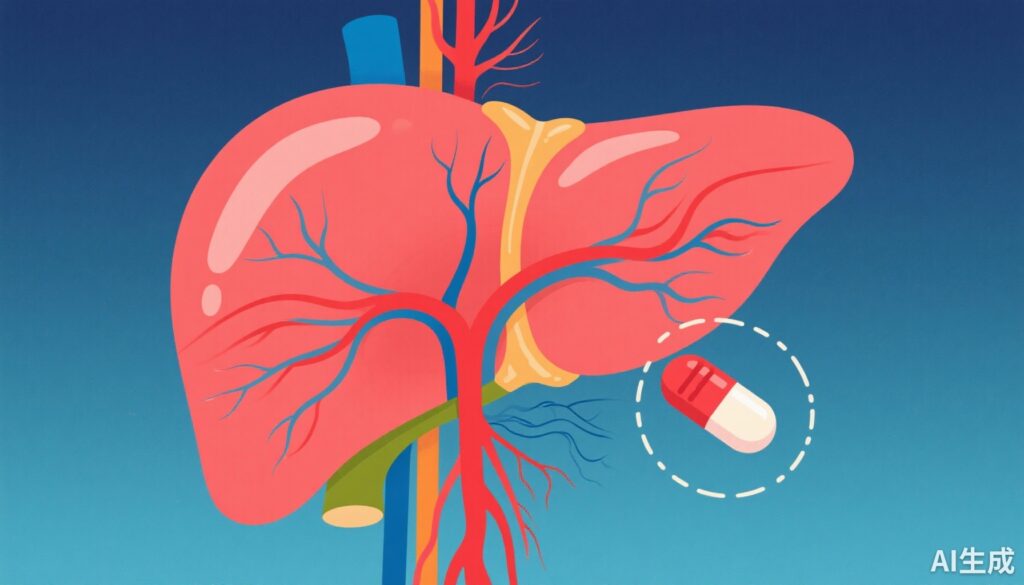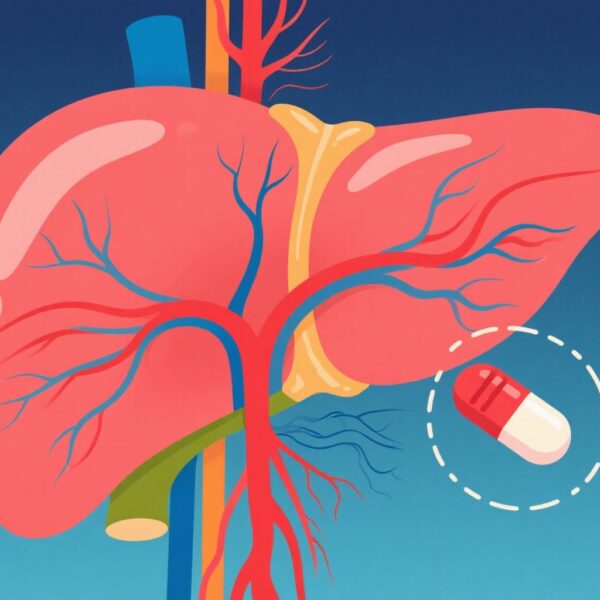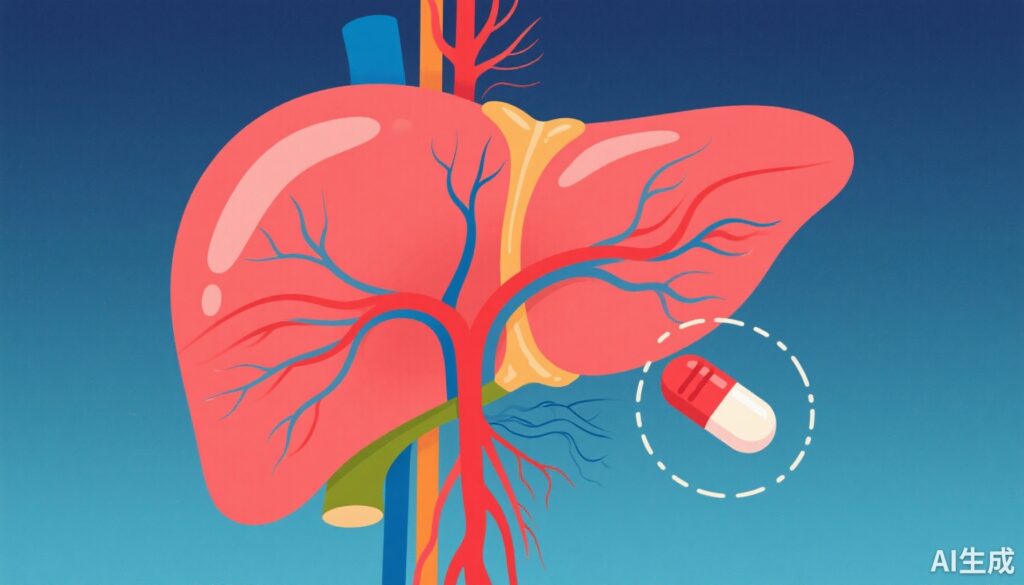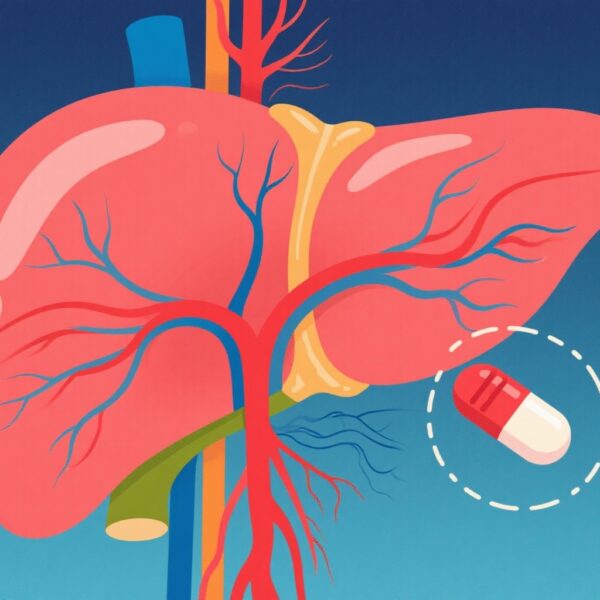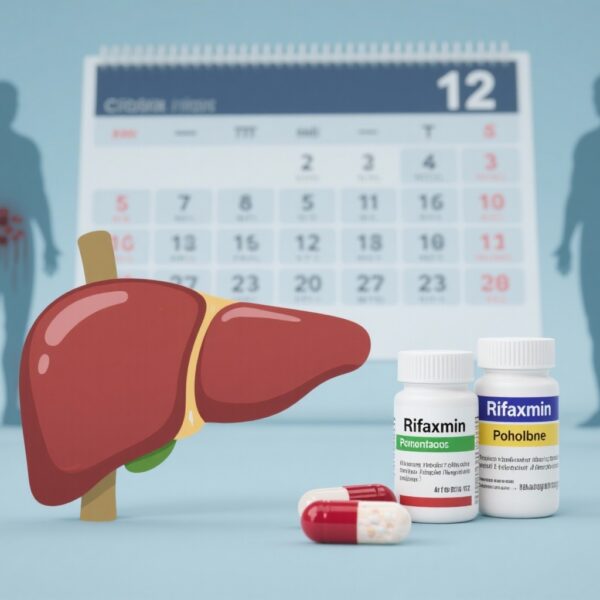Highlight
- The CIRROXABAN randomized controlled trial assessed rivaroxaban 10 mg daily against placebo in patients with cirrhosis complicated by portal hypertension and moderate liver dysfunction.
- Rivaroxaban treatment showed a trend towards reduced portal hypertension-related complications or death/liver transplant, with a favorable effect particularly in patients with Child-Pugh B7 cirrhosis.
- Non-portal hypertension-related bleeding events were more frequent in the rivaroxaban group, yet there was no significant increase in major bleeding.
- These findings support further exploration of direct oral anticoagulants in cirrhosis to prevent decompensation, balancing efficacy and bleeding risk.
Study Background
Portal hypertension (PHT) is a key driver of morbidity and mortality in cirrhosis, precipitating complications such as variceal bleeding, ascites, and hepatic encephalopathy. These complications significantly reduce quality of life and survival. Although portal pressure reduction with beta-blockers and endoscopic interventions has improved outcomes, residual risk remains high. Emerging evidence suggests that coagulation abnormalities and microthrombosis contribute to the progression of cirrhosis and portal hypertension. Preliminary studies have indicated that anticoagulation may prevent or delay PHT-related complications and improve survival. Rivaroxaban, a direct oral anticoagulant (DOAC) that inhibits factor Xa, offers convenient oral administration and predictable pharmacokinetics, but its safety and efficacy in cirrhosis with moderate liver dysfunction remain incompletely understood. The CIRROXABAN trial was designed to address this clinical gap by evaluating rivaroxaban’s role in preventing PHT complications in cirrhosis.
Study Design
The CIRROXABAN study was a multicenter, randomized, double-blind, placebo-controlled trial. It enrolled 90 patients with cirrhosis, clinically evident portal hypertension, and moderate liver dysfunction (Child-Pugh score between 7 and 10). Participants were randomized to receive daily rivaroxaban 10 mg or matching placebo for a planned treatment duration of 24 months. The primary composite endpoint was the time to first portal hypertension-related complication or death or liver transplantation, whichever occurred first. Analyses were performed with both modified intention-to-treat and per-protocol approaches to ensure robustness.
Key Findings
After a median follow-up of 10.1 months, 34 patients had experienced the primary endpoint. In the intention-to-treat population, 23 of 49 patients in the placebo group (46.9%) and 11 of 41 patients in the rivaroxaban group (26.8%) reached the primary endpoint. The cumulative probability of survival free from PHT complications at 1 year was 54.4% in the placebo arm versus 78.7% in the rivaroxaban arm; at 2 years, this was 43.0% versus 67.1%, respectively, showing a strong numerical trend favoring rivaroxaban (log-rank p=0.058).
In a post hoc stratified analysis focusing on patients with Child-Pugh B7 scores (n=55), rivaroxaban treatment was associated with a significant reduction in risk (hazard ratio 0.258, 95% CI 0.074–0.900), suggesting this subgroup might derive greater benefit.
The per-protocol analysis, which included patients completing treatment as planned, showed the primary event occurred in 19 of 41 patients (46.3%) in the placebo group versus 9 of 37 (24.3%) in the rivaroxaban group, corresponding to a hazard ratio of 0.463 (95% CI 0.209–1.024), again favoring rivaroxaban.
Safety-wise, non-portal hypertension-related bleeding events were more frequent in rivaroxaban-treated patients (36.6% versus 14.3% in placebo; relative risk 2.56; 95% CI 1.16–5.67). However, importantly, there were no significant differences between groups regarding major bleeding events, supporting an acceptable safety profile at the studied dose.
Expert Commentary
These data build on prior smaller studies suggesting anticoagulation may modulate the progression of portal hypertension and prevent decompensation. The potential mechanisms include inhibition of intrahepatic microthrombi formation, reduction of fibroinflammatory cascades, and improvement in hepatic microcirculation. Although the overall primary endpoint reduction did not meet conventional statistical significance, the clinically meaningful trend and significant subgroup findings in Child-Pugh B7 patients are encouraging.
Safety concerns around bleeding risk have been a major barrier to routine anticoagulation use in cirrhosis. The CIRROXABAN results suggest rivaroxaban at 10 mg daily may strike a balance between efficacy and bleeding safety in a carefully selected population with moderate liver dysfunction. Nevertheless, the increased frequency of non-PHT-related bleeding events warrants vigilance and indicates the need for personalized risk assessment and monitoring.
Limitations include the modest sample size and relatively short median follow-up, which may limit detection of less frequent adverse events and confirm long-term benefits. The post hoc nature of subgroup analyses requires cautious interpretation and prospective validation. Future studies might also explore dosing optimization and combination therapies.
Conclusion
The CIRROXABAN study offers novel evidence that rivaroxaban may improve portal hypertension complication-free survival in patients with cirrhosis and moderate liver dysfunction without a significant increase in major bleeding risk. These findings support further clinical research into the tailored use of direct oral anticoagulants as a strategy to prevent liver decompensation and improve outcomes in this high-risk population. Given the complex hemostatic abnormalities in cirrhosis, anticoagulation must be carefully balanced against bleeding risks, and larger trials with longer follow-up are needed to confirm efficacy, optimize dosing, and define the patient populations most likely to benefit.
Funding and Clinical Trial Registration
The study was registered under ClinicalTrials.gov identifier NCT02643212 and EudraCT 2014-005523-27. No specific funding disclosures were provided in the published report.
References
Puente Á, Turón F, Martínez J, Fortea JI, Guerra MH, Alvarado E, et al. Rivaroxaban to prevent complications of portal hypertension in cirrhosis: The CIRROXABAN study. J Hepatol. 2025 Nov;83(5):1069-1076. doi:10.1016/j.jhep.2025.06.035. Epub 2025 Jul 19. PMID: 40691992.

